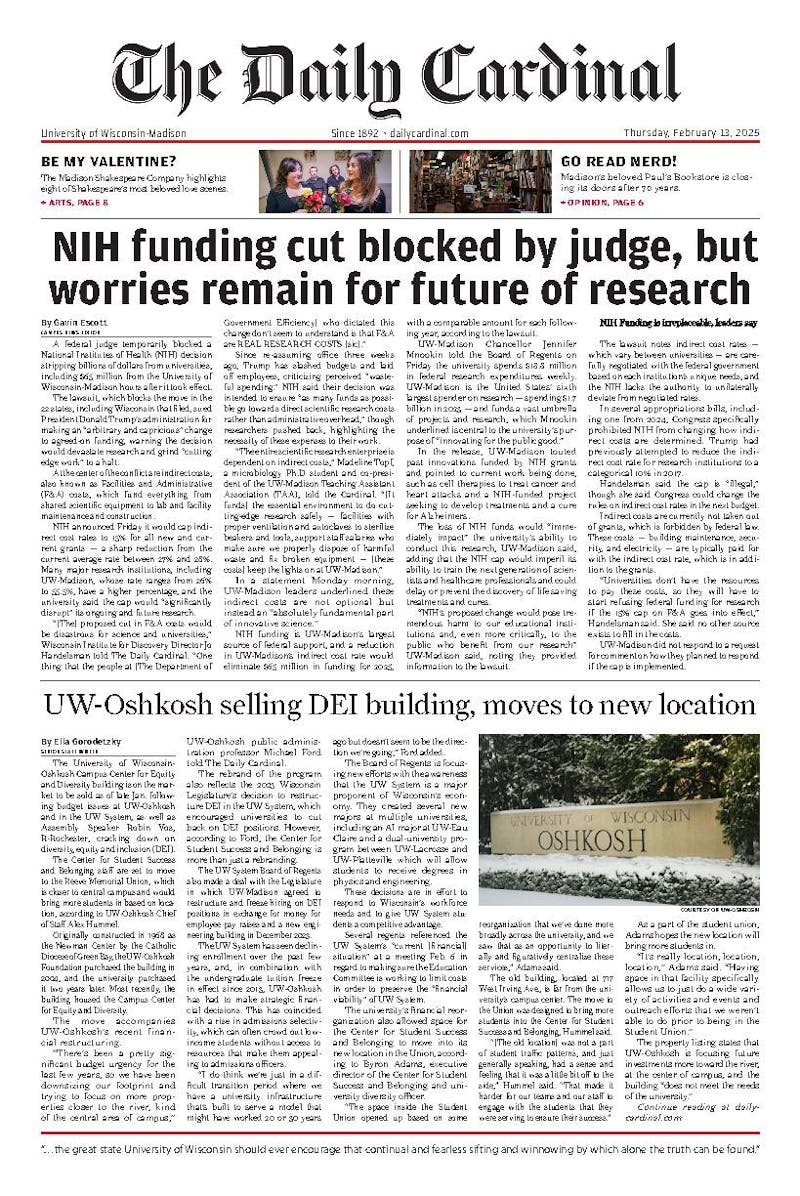Each year on the first Saturday in May, overworked students put down their books and grab a beer at the Mifflin Street Block Party. The annual celebration is one of Madison's most anticipated events, but few students know the full, politically charged history of the event.
The party dates back to May 3, 1969, a time when both the university and the nation were embroiled in the controversy of the civil rights movement and the war in Vietnam. The graduate students, who mostly populated the ""Miffland"" neighborhood at the time, harbored an ""intense opposition to the war"" and a ""blatant disregard for authority,"" according to former Madison Mayor Paul Soglin.
Soglin was the district's alder in 1969. This counterculture community was the center of Madison's antiwar movement during the Vietnam War.
""The week before the block party, three or four students said, ‘Let's have a block party in celebration of a beautiful spring day and our politics,'"" Soglin said.
Soglin said he inquired about a permit for the event, but was told by the city, ""just have a block party—put up barricades and have it.""
""That's how it was done all over the city for 40 years,"" he said. ""There was no permit—nothing.""
The Madison Police Department disagreed. According to then Chief Wilbur Emery, the party represented ""a challenge to the city"" and ""could not be condoned.""
Mifflanders began gathering just before noon on the 500 block of West Mifflin. Bands set up on porches, residents set out stereos and a party of a few hundred people started to gather, according to The Capital Times.
A few hours into the party, then-MPD Inspector Herman Thomas arrived with about 20 officers dressed in full riot gear, ready to take back the block from the students.
""We're going down there, you stay behind me, and we're going to crack some skulls,"" Thomas was later quoted as saying, according to Soglin.
There was no question as to who incited the violence: Film shot during the riot indicates the police initiated the violence, Soglin said.
Officers occupied the middle of the street and began to arrest people who were dancing. As the police arrested more students, the crowd resisted. Fueled by anger, outrage, tear gas and nightsticks, a full-scale riot encompassed Mifflin, the Southeast residence halls, State Street and the Langdon Street areas by 8 p.m. and lasted for three days, Soglin said.
""It was more than the police bargained for,"" said Soglin, who was one of more than 100 people arrested that day. He said it was one of the first major riots on UW-Madison's campus.
According to Soglin, Citizens wearing white armbands arrived at the scene of the confrontation on the final days of the riots. Among them was Shirley Abrahamson, who went on to become chief justice of the Wisconsin Supreme Court.
""The students got some comfort in the fact that people from the community were there to witness what was going on,"" Soglin said. ""In some way, it did force the police to show more restraint and contributed to the winding down of the riots.""
Riots consumed the downtown area until Monday, May 5, when the students ""basically declared victory and stopped,"" Soglin said.
Mifflin Street residents continued to hold the block party for most of the duration of the Vietnam War. In 1982, the Mifflin Street Co-op provided the block party's first official sponsorship, which lasted until 1991.
By the time the co-op declined to sponsor the event, Mifflin had lost much of its roots as a protest. Critics of the event say the party has become more about binge drinking than promoting social change. Soglin agrees, but encourages students not to compare current activism to what happened in the '60s.
""Instead of worrying about comparisons between then and now, if I were a student, I would focus on current issues and what's important,"" Soglin said. ""There's no college campus today that has the degree of activism that it did 40 years ago. But it's still one of the outstanding campuses and always will be.""






